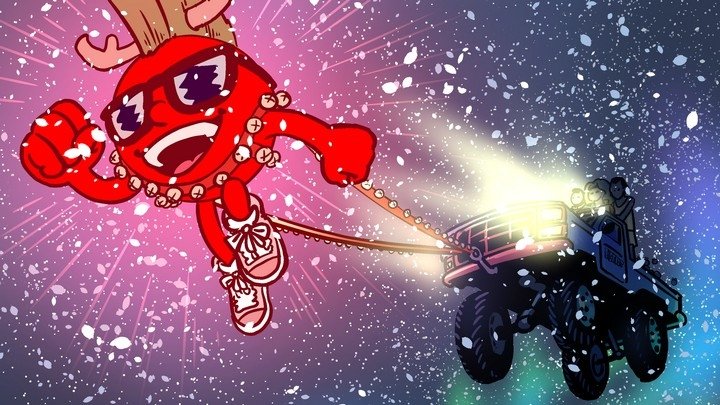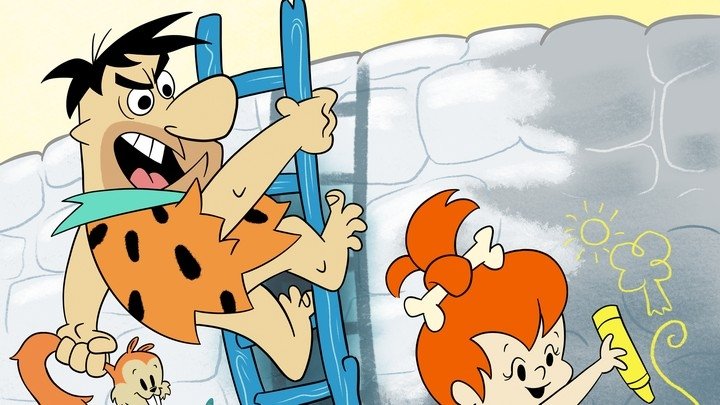Super NES Mini Countdown: #2 | Super Mario World 2: Yoshi's Island
Nintendo's greatest 2D platformer. Sorry, Gumshoe.
Nintendo's Super NES Classic Edition mini-console arrives at the end of the month, and the Retronauts writing team has voted to rank the 20 classic games on the mini. Unlike last year's Classic NES Edition, the Super NES mini doesn't have a single dud on it, so think of this as a countdown from good to great.... to greatest. Of all time. The greatest platformer, of all time. Yoshi's Island, is the greatest platformer of all time. I may be exaggerating, but only a little.
- 20. Super Punch-Out!!
- 19. F-Zero
- 18. Kirby's Dream Course
- 17. Donkey Kong Country
- 16. Star Fox
- 15. Super Mario RPG
- 14. Secret of Mana
- 13. Super Mario Kart
- 12. Street Fighter II Turbo: Hyper Fighting
- 11. Super Ghouls 'n' Ghosts
- 10. Kirby Super Star
- 9. EarthBound
- 8. Final Fantasy III
- 7. Contra III: The Alien Wars
- 6. Super Castlevania IV
- 5. Super Mario World
- 4. Mega Man X
- 3. The Legend of Zelda: A Link to the Past
2. Super Mario World 2: Yoshi's Island
Dev.: Nintendo EAD
Publisher: Nintendo
Genre: Side-scrolling action
Release date: August 5, 1995 [JP] ] October 4, 1995 [U.S.] January 5, 1996 [EU]
What makes Super Mario World 2: Yoshi's Island a worthy inclusion?
It's the first true Yoshi game
Ever since his debut in Super Mario World, Yoshi has been a beloved and popular character across many age groups that has been poorly served by a cavalcade of uninteresting or barely-relevant tie-in games, including Mario & Yoshi, Yoshi's Cookie and Yoshi's Safari, but with the release of Yoshi's Island, Yoshi was finally given a marquee game that met the expectations of Super Mario World fans and firmly established the core characteristics of a Yoshi game that, for better or worse, remain more-or-less untouched across several sequels. (That's not to say they wouldn't continue to slap Yoshi onto other games — Tetris Attack! Yoshi Touch & Go! — but it was at least possible to delineate the "real" games from the spinoffs.)
Yoshi's Island is peak 2D Nintendo
Super Mario World saw Shigeru Miyamoto and co. straining against the boundaries of the 2D Super Mario formula and one might argue that it was more iterative than creative; conversely, despite the nominal Super Mario branding,Yoshi's Island contains an unexpected concentration of new ideas that has yet to be matched by any other 2D Nintendo platformer since — core mechanics like the Baby Mario system, egg-throwing and Yoshi's mid-air flutter jump are wholly original; every stage features an original enemy or gimmick and every element borrowed from Super Mario has been reinterpreted in a fresh way. (Also: real, honest-to-god boss fights!) Nintendo would continue to developed and produce 2D action games even during the peak of 3D hysteria and one could credit the New Super Mario Bros. series with the resurgence of 2D platforming in the mainstream, but Ypshi's Island remains the yardstick by which all other Nintendo platformers should be measured.
Yoshi's Island's visuals are timeless
The Yoshi's Island team famously insisted on the game's hand-drawn aesthetic as a respose response to internal pressure to adopt computer-generated graphics in the vein of the incredibly successful Donkey Kong Country games, a decision that indsight quickly vindicated: Yoshi's Island is cemented as one of the most visually spectacular games of its genre and is still referenced by modern developers as an example of cogent art design, whereas the Donkey Kong Country series is remembered as a relic of an extremely specific era, albeit one with great music. What's more, the art style consciously synergised to the strengths and weaknesses of the Super FX 2 chip in a way that has masked the deficiencies of now-ancient technology; the thick, messy line-art style not only masks the pixel distortion caused by the primitive rotation tech, it actually uses those imperfections to further imbue the game with a charming roughness that would be otherwise difficult to convey.
Yoshi's Island is packed with SFX
Much of Yoshi's Island's visual splendour was made possible by the Super FX 2 co-processor, a chip designed for rudimentary 3D that was co-opted to allow for a variety of novel features, both obvious and subtle, that could not be achieved with standard SNES hardware. From the rotating island on the title screen to the final boss, the game constantly makes use of the SFX2 chip to rotate, stretch and undulate all manner of enemies and environments in a very ostentations manner, peaking early with the notorious "Touch Fuzzy, Get Dizzy" stage, but the power of the chip was also used in more understated ways: an extra layer of parallax here, a few extra enemies per screen there, all minor touches that the SNES' main processor just couldn't handle on its own that aren't as flashy as a viscous slug with a heart condition or a tussle on a 360-degree rotating planet.
Yoshi's Island lets you play at your own pace
With Yoshi's Island, Nintendo decreased the amount of endurance required to clear the game and each individual stage: there are no time limits, copious lives and ample chances to recover after getting hit by enemies, and the game autosaves after every stage, allowing players to progress as slowly or quickly as they like. Additionally, the player is scored for collecting all the items in a stage and reaching the end unscathed and doing so allows the player to eventually unlock extra levels, so more skilled players have an incentive to master the levels and less skilled players are given something extra to do in the easier levels in the event that they hit a difficulty spike that they can't yet overcome. That's not to say the game isn't challenging or tense — some of the later stages and the extra completionist content is quite demanding, and losing Baby Mario is always nervewracking, even if it rarely places the player in objective danger — but there's very little extrinsic pressure to beat a level in a sitting or to make constant progress.
Interesting facts about Super Mario World 2: Yoshi's Island
Movin' on up
In spite of the developers' resistance to DKC-esque computer-generated graphics, there are vestigial CG elements present in the game, including the game's intro and the screen displayed when Baby Mario is kidnapped by Kamek's Toadies. These sprites were rendered by then-rookie Yoshiaki Koizumi, an illustrator whose hobbyist 3D animations, rendered on an imported Commodore Amiga, caught the eye of Shigeru Miyamoto and eventually led to his appointment to the Super Mario 64 team as assistant director.
Uki-Kong
Among the many enemies cut from the game is a variation of the Ukiki monkey enemy that was modeled after Donkey Kong, complete with barrel-tossing action. Was it considered in poor taste? I can't imagine so; it's not especially provocative. Was it superseded by one of the approximately eighty thousand other enemies already present in the game? Yeah, probably.
Verstohlen
Yoshi's Island was the first main-line Super Mario game to be translated into German and, as with many of Nintendo of Europe's '90s German localizations, they slipped in a few cheeky references: the Naval Piranha boss was renamed Audrey (in reference to Little Shop of Horrors), the Burt enemies were renamed Xibelo (in reference to his resemblance to Obelix from the famous Asterix comic series) and the "Touch Fuzzy, Get Dizzy" stage was renamed "Lustiges Sporen Drama" which translates to "Funny Spore Drama" but initializes to LSD.
(For many, many more tidbits that aren't mentioned here, be sure to listen to this week's podcast!)




